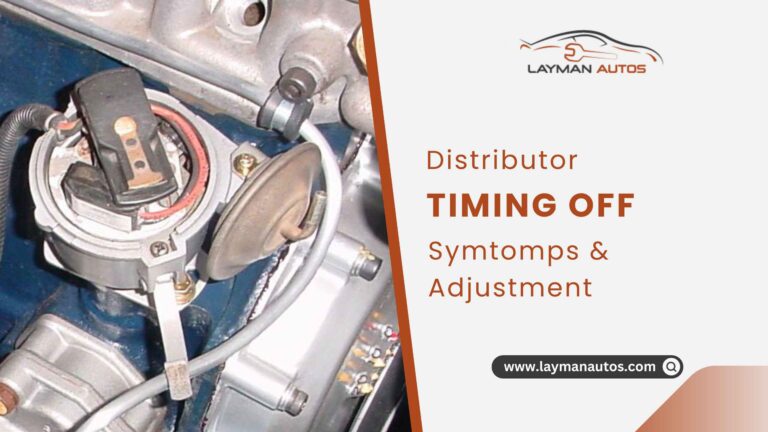All My Transmission Fluid Leaked Out While Driving – How to fix it?
Transmission fluid is responsible for lubricating, cooling, and cleaning gears and other components within the transmission. I also know the significance of transmission fluid for the vehicle’s efficacy and do everything to avoid reaching it to a low level. Even then, why all my transmission fluid leaked out while driving is a question that my mind asks me repeatedly.
Transmission fluid leaks due to malfunctioning the transmission pan gaskets, broken seals, coolers, or transmission pan drain. However, you can fix the fluid leaking problem by replacing the transmission seals and oil pan and taking care of the bolts and plugs that hold these parts together.
In this article, I will mention the primary reasons for the transmission fluid leak while driving. In addition, knowing how to fix the issue or the signs of the low transmission fluid is a must to know the complete fluid running out.

Transmission Leak Indications
Do you become tired of refilling the transmission fluid and want to search for the causes of its draining? If yes, look at the condition of the components directly linked to fluid. If the transmission parts are on the verge of damage, there is likely the chance of worn-out parts or cracks that cause the fluid to leak.
The common symptoms that force you to consider looking after your transmission fluid and take actions to prevent leaking are:
- Warning lights on the dashboard
- Fluid leaking beneath the car or on the ground when it is parked
- Grinding gears,
- Acceleration is slow
- Car becomes shaky
- You will hear strange noises due to gear slippage
- Fluid’s burning smell
All My Transmission Fluid Leaked out While Driving – Potential Causes
Transmission fluid is not to be confused with brake fluid or engine oil. The fluid is mainly used to lubricate the various transmission components to make the vehicle work seamlessly. What causes transmission fluid to leak?
Transmission Pan
What function does the transmission pan perform that its damage costs you constant refilling? The transmission pan is at your service to enhance the vehicle’s performance. Also, it is essential to protect the stored fluid from contamination.
When you ride the car on the road, the transmission pan is at risk of constant wear and tear due to its proximity to the roadside rocks and bumps. If it becomes the victim due to a puncture, the fluid leak is the result.
Broken Seals
Excess of everything is bad; the same goes for high transmission fluid levels. The hydraulic fluid is circulated through all the transmission components via the seals. If these are broken or cracked, you will notice fluid leaking. Moreover, the transmission seals are sensitive to extreme exposure and easily worn out, causing the fluid to leak.
Fail Transmission Gaskets
Gaskets are barriers and restrict fluid flow to remain in the transmission pan. If gaskets malfunction due to high temperature or wrong gasket alignment, seals that hold the transmission fluid break and promote transmission fluid gushing out.
Cracked Fluid Lines
As the names indicate, the transmission fluid lines establish the link between the transmission and the radiator. The steel or aluminum lines are durable and not harmed by minor cracks. However, leaving them unattended in hot temperatures, these lines get several cracks through which the transmission fluid quickly passes out.
How Can I Stop My Transmission from Leaking?
There are many ways to stop the transmission fluid from leaking. You need to know what cure suits your vehicle the best. Furthermore, you should knock on the mechanic’s door in case of severe transmission issues.
- Look for more minor punctures and holes in the transmission pan.
- Refrain from over-tightening or loosely attaching plugs or bolts
- Make use of the exact force of rotating the bolts in place
- Avoid aluminum transmission pans
- Refrain from steel transmission pans
Check the Transmission Fluid Level
The first step in keeping the automatic transmission system in good health is to check the transmission fluid. You must know the condition of the fluid and count the days you get it refilled or replaced.

The fluid-checking method requires only a minor effort to find the dipstick, and you are good to go. Open the hood of the car when your car is parked, and leave the engine running so that its operating temperature warms and expands the fluid.
- Search for the yellow protruding handle of the dipstick
- Pull it out and clean it with a rag
- Insert the dipstick again to its full-length
- Check the quantity of fluid by pulling out the dipstick
- The fluid must be in the marking between Hot and Cold
Since you are checking the fluid level when the engine is hot or running, the correct reading is obtained. If you check when the engine is cold, the fluid level is marked low, and you end up overfilling it by mistake.
Keep the Fluid in Good Condition
When did you check the transmission fluid level or refill it last? If not, make it asap, as your transmission system is at risk. From where to start keeping the fluid in good condition? The first indication is to keep the color of the fluid in mind while checking it.
The fluid color must be reddish when you get the fresh refill in the transmission system. Over time, when vehicles run on the road, they wear and tear and change color from freshly red hues to dark brown, which is a sign of their replacement. The last stage to get the new refilled is when your transmission fluid starts smelling burnt.
Ensure Transmission Flush
As you know, healthy and aged transmission fluid color is different. The next step is to check and balance the distance you cover without topping up the fluid. It is recommended to flush the transmission fluid every 30,000 miles.
Pro tip: Remember to check the particular fluid for your vehicle from the owner’s manual.
Functioning of the Coolant System
How does the coolant system link with the transmission system? Well, you must know how to maintain the cooling system, which is beneficial for the transmission not to catch heat. If the vehicle’s coolant level is low, there are chances that the engine will end up overheating.
Plan Vehicles’ Annual check-ups
You don’t want to harm the transmission system due to fluid leaking. So, you must get help from a car expert to check the transmission components and replace them if necessary. For example, the vehicle is useless with damaged or cracked parts. Consider the vehicle in a good state and replace the transmission seals and oil pan.
Summing Up
Transmission fluid maintenance is the same as doing a regular vehicle inspection. You should not afford the leaking fluids as it is detrimental to the engine. In this article, I have mentioned the worth-reading symptoms that make you take quick action in keeping the transmission fluid in good condition. In addition, if you are unsure about the DIY methods, consulting the expert does not make you regret the decision.
Frequently Asked Questions
What Happens if All Your Transmission Fluid Leaks out?
Transmission fluid provides lubrication so that all the transmission components work smoothly. If all your transmission fluid leaks, you won’t be able to drive the car. As the gears suffer problems in shifting, so does the engine coupling is diminished.
Can I Drive My Car if It’s Leaking Transmission Fluid?
Yes, you can drive your car if it’s leaking fluid, but up to 10 miles. Gears need lubrication for their functioning. If you continue driving the car, more fluid will leak and create problems for other parts to work efficiently. Also, you are recommended to drive to the nearest mechanic shop.
Where Do Most Transmission Leaks Occur?
The most common site where transmission leaks occur is the transmission pan. It is the most affected due to proximity to roadside debris or incorrect mounting with loose bolts.



